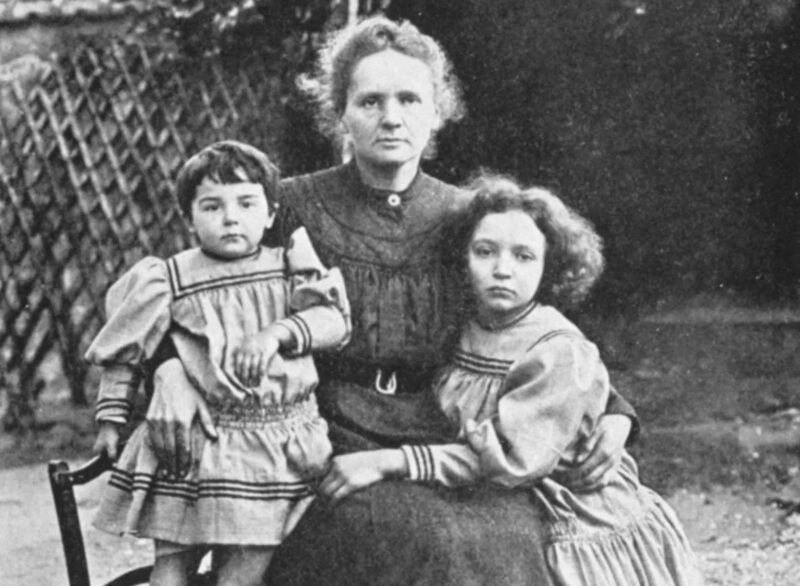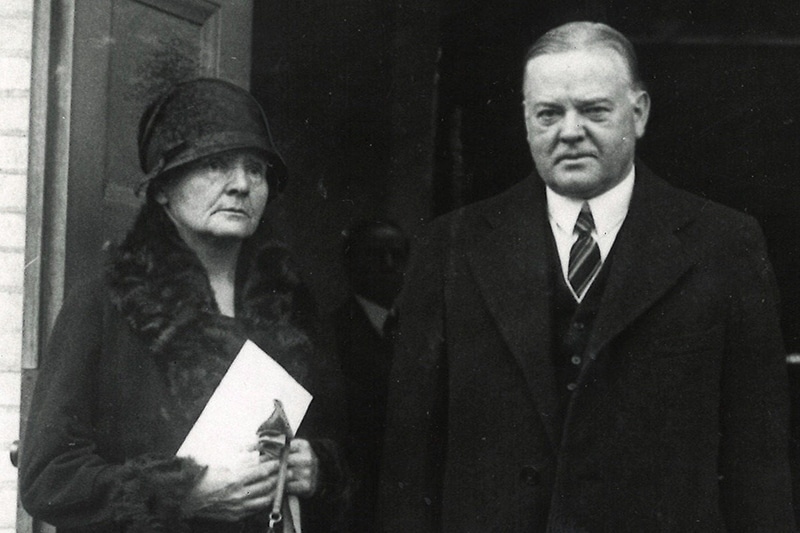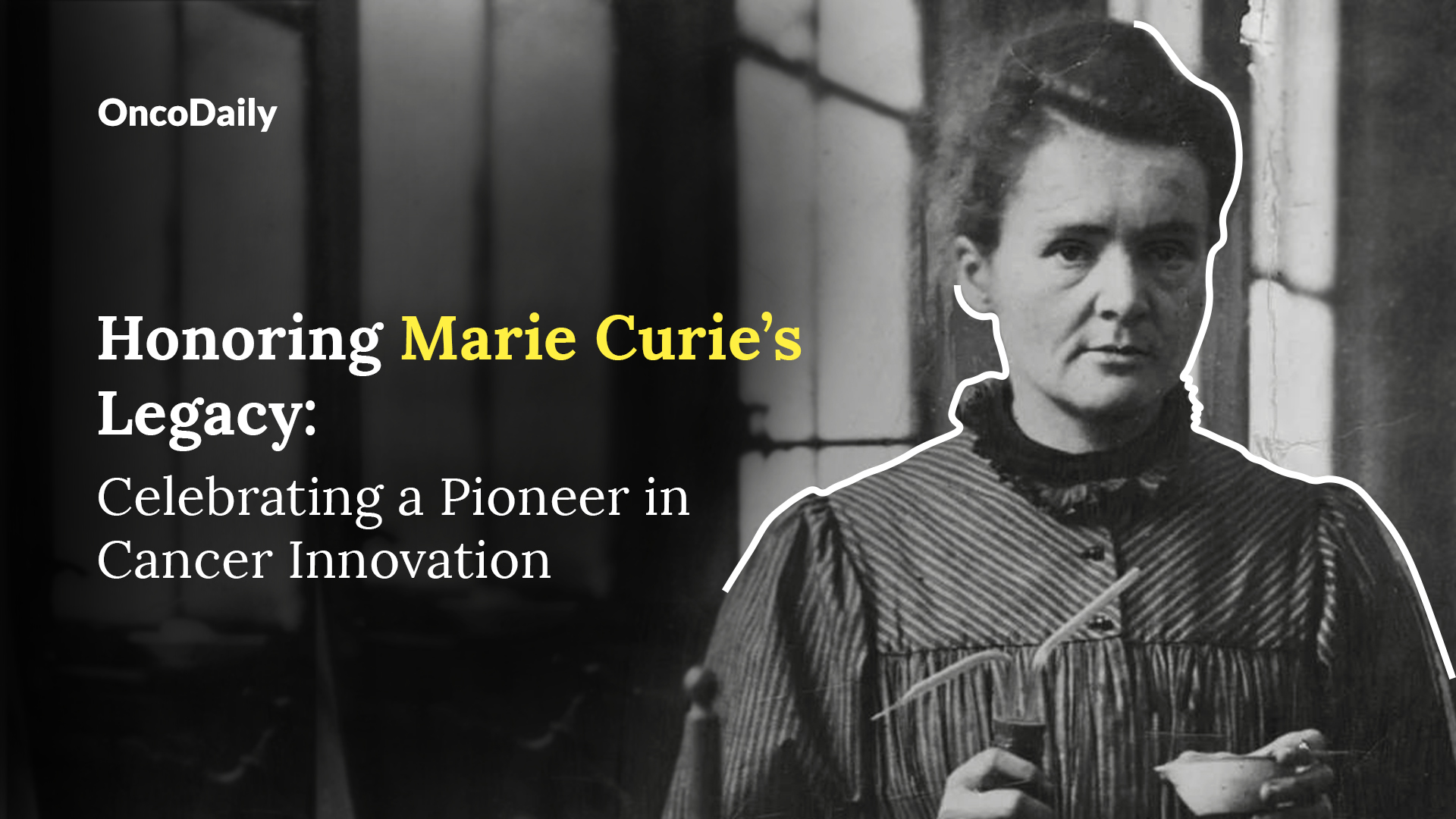November 7 marks the celebration of Marie Curie’s birth , one of the most groundbreaking scientists in history.
Renowned for her discoveries in radioactivity, Curie not only revolutionized physics and chemistry but also paved the way for modern medicine. Her unwavering dedication to science, even in the face of personal and professional adversity, continues to inspire generations. Her legacy is one of brilliant discoveries, personal sacrifice, and an enduring commitment to advancing knowledge for the benefit of humanity.
Early Life

Maria Sklodowska Curie was born in Warsaw on November 7, 1867. She showed exceptional academic promise from a young age. Her prodigious memory and love for learning led her to win a gold medal upon completing her secondary education at the Russian lycée at the age of 16.
She was the daughter of a secondary-school teacher and grew up in a family that valued education despite the political and social constraints imposed by Russian domination over Poland at the time. After participating in a student revolutionary movement, she moved to Cracow, then under Austrian rule, and later to Paris in 1891 to continue her studies at the Sorbonne.
She earned her Licenciateships in Physics and the Mathematical Sciences in Paris, where she met Pierre Curie, a professor of physics.
Legacy and Family: A Life of Love, Loss, and Groundbreaking Discovery
Within a year of their meeting in 1894, Pierre Curie proposed to Marie Skłodowska. They eventually married on July 25, 1895, beginning a collaboration that would lead to some of the most significant discoveries in the history of science.

Shortly after their marriage, they began working together on research that would lead to the discovery of polonium and radium—two elements that would revolutionize the field of radioactivity. They worked side by side in their makeshift laboratory, often facing difficult conditions and limited resources. Their shared pursuit of knowledge and commitment to advancing science led to groundbreaking discoveries, including the discovery of polonium and radium in 1898, which forever changed the understanding of atomic structure and radiation.

In 1906, Marie’s life was struck by an unimaginable tragedy. Pierre Curie was killed in a horrific accident on April 19, 1906, when he was knocked down by a horse-drawn carriage while crossing the street in Paris. After Pierre Curie’s death in 1906, Marie Curie assumed his position as Professor of General Physics at the Sorbonne, becoming the first woman to hold a faculty position at the university.
Marie and Pierre Curie had two daughters, Irène and Ève, both of whom would go on to have notable lives of their own.
Irène Joliot-Curie (born 1897) was the elder of the two daughters. Like her parents, she chose a career in science. Irène became a distinguished physicist and, along with her husband, Frédéric Joliot, made significant contributions to the study of radioactivity. Together, they were awarded the Nobel Prize in Chemistry in 1935 for their discovery of artificial radioactivity, which was based on work that built upon her mother and father’s groundbreaking discoveries. Tragically, Irène, like her mother, suffered from a radiation-related illness. She died in 1956 from leukemia, at the age of 58, a direct result of her work with radioactive materials.
Ève Curie (born 1904) was the younger daughter, and unlike her parents and sister, she did not follow a career in science. Instead, she pursued a career in writing and journalism. Ève is perhaps best known for her biography of her mother, titled Madame Curie, which became a bestseller and was later adapted into a film. Ève was also deeply involved in humanitarian causes and continued to honor her mother’s legacy by advocating for women’s rights and scientific advancement. She lived a long life, passing away in 2007 at the age of 102.

Pioneering the Science of Radioactivity
The discovery of radioactivity began with Henri Becquerel‘s groundbreaking finding in 1896 that uranium emitted rays that were similar to X-rays, a phenomenon he called “spontaneous radiation”. Marie Curie, in search of a thesis topic, became intrigued by Becquerel’s discovery and decided to investigate whether the phenomenon was exclusive to uranium, or whether other substances also exhibited similar properties.
In 1898, Marie was joined by Pierre Curie in her work on pitchblende, and together they embarked on a difficult and meticulous task of isolating the unknown element. Their efforts soon led to the discovery of two new elements: polonium (named after Marie’s homeland of Poland) and radium, both of which were highly radioactive. While Marie Curie focused primarily on the chemical analysis and purification of these elements, Pierre Curie concentrated on studying the physical properties of the radiation they emitted.

Marie Curie’s groundbreaking research on radioactivity earned her a Doctorate of Science from the University of Paris in June 1903. That same year, she and Pierre were jointly awarded the Davy Medal by the Royal Society for their work on the radiations of the element radium. In recognition of their pioneering work, Marie, Pierre, and Henri Becquerel were also jointly awarded the Nobel Prize in Physics in 1903. Their Nobel Prize honored their collective discovery of radioactivity, a term Marie Curie herself would coin to describe the phenomenon of spontaneous radiation, and which would go on to have far-reaching implications in both science and medicine.
 Marie, Pierre Curies and Henri Becquerel
Marie, Pierre Curies and Henri Becquerel
The Curies conducted experiments in makeshift labs and often needed to take on additional teaching to support themselves. Despite these hardships, they were able to produce pioneering work that earned them the Nobel Prize in Physics in 1903, shared with Becquerel, for their study of radiation.
After Pierre’s death, Marie Curie’s continued work was pivotal in establishing the Curie Institute (Institut Curie), a leading research center dedicated to the study of cancer and radiology. Founded in 1914, the Curie Institute became a world-renowned center for research into radioactive substances and their use in medicine. Marie was also appointed the Director of the Radium Institute at the University of Paris, where she worked tirelessly to continue her research and mentor young scientists. Her efforts were instrumental in advancing the use of radiation therapy to treat cancer, which remains a critical medical treatment to this day.
Her later work focused on the medical applications of radium, and during World War I, she used her knowledge to assist with the treatment of soldiers, including the development of mobile X-ray units. She also advocated for the establishment of a radioactivity laboratory in Warsaw, and in 1929, President Herbert Hoover of the United States presented her with a significant donation to purchase radium for the lab.

Curie’s scientific accomplishments were recognized globally, earning her honorary degrees and memberships in scientific societies. She was awarded her second Nobel Prize in Chemistry in 1911 for her discovery of the elements radium and polonium and for her work on radioactivity. She is the only person to have won Nobel Prizes in two different scientific fields.
She wrote several influential works, including Recherches sur les Substances Radioactives (1904) and Traité de Radioactivité (1910).
Marie Curie died in 1934 at the age of 66 from aplastic anemia, likely caused by her prolonged exposure to radiation. Her name remains synonymous with scientific excellence and dedication, and her work continues to shape fields ranging from medicine to physics and chemistry.

Marie Curie’s groundbreaking work in the early 20th century revolutionized oncology by laying the foundation for radiation therapy, which has since become a cornerstone in cancer treatment. Her groundbreaking discoveries changed the world of oncology.
1. Discovery of Radioactivity
Marie Curie, along with her husband Pierre Curie, discovered the phenomenon of radioactivity, which was pivotal in understanding how certain elements, like radium, could emit energy. Her work on radioactivity revealed the potential for radiation to be used in medicine, especially in the treatment of cancer.
2. Radium and Cancer Treatment
In 1898, Marie Curie isolated radium, a highly radioactive element. At the time, doctors were looking for innovative treatments for cancer, and Curie’s discovery provided a new tool: radiation could be used to target and kill cancerous cells. This led to the development of radiotherapy (or radiation therapy), a treatment where controlled doses of radiation are used to shrink or destroy tumors.
In the early 1900s, Curie’s research inspired the first use of radium in the treatment of cancerous tumors, and her work with radium contributed directly to its use in medical applications.
3. The Development of Radiation Technology
Curie was instrumental in pioneering the first mobile radiography units, which were used during World War I to treat soldiers. These mobile X-ray units helped diagnose injuries and infections but also laid the groundwork for the use of radiation for cancer treatment.
Her efforts not only advanced radiology but also showed the world how technology could be harnessed for more effective cancer diagnosis and therapy.
4. Scientific and Medical Impact
Curie’s discoveries directly led to the birth of the field of radiotherapy as a recognized medical specialty. Her research paved the way for the creation of more precise and controlled techniques for delivering radiation to cancerous tissues, improving treatment outcomes and survival rates.
Her work also raised awareness about the medical potential of radioactivity and prompted further research into using radiation to treat various diseases, not just cancer.
5. Legacy in Oncology
Marie Curie’s contributions to oncology were groundbreaking, and her legacy is still felt today. Modern radiation therapies have advanced significantly since her time, but the basic principles she uncovered continue to be fundamental to cancer treatment. Techniques such as brachytherapy, external beam radiation therapy, and proton therapy all owe a debt to Curie’s early research.
Additionally, her dedication and pioneering work in a male-dominated field set a precedent for women in science and medicine, inspiring future generations of researchers and oncologists.
Films About Marie Curie: The Life and Legacy of a Pioneering Scientist
Marie Curie’s remarkable life and groundbreaking scientific achievements have inspired numerous films that delve into both her professional milestones and personal journey. As one of the most celebrated scientists in history, Curie’s contributions to the understanding of radioactivity, her pioneering work with radium and polonium, and her historic role as the first woman to win a Nobel Prize have captivated audiences and filmmakers alike. These films not only chronicle her scientific breakthroughs but also explore the challenges she faced as a woman in a male-dominated field during the early 20th century.

Radioactive (2020)
This film is the most recent dramatization of Marie Curie’s life. It focuses on her scientific career, particularly her discovery of radioactivity, and explores her personal relationships, including her bond with her husband Pierre Curie. The movie delves into the challenges she faced as a woman in science, her passion for her work, and the impact of her discoveries on the world. The film’s title refers to the element that Curie discovered and the lasting influence of her research.
Marie Curie: The Courage of Knowledge (2016)
A French-language film that was screened in the Contemporary World Cinema section of the Toronto International Film Festival in 2016. This film explores Marie Curie’s journey, focusing on her academic achievements, her struggle for recognition in the scientific world, and her emotional and intellectual partnership with Pierre Curie. The film touches upon her resilience and the personal and professional challenges she faced as a pioneering woman in science.
Marie Curie: More Than Meets the Eye (1997)
This TV film offers a fictionalized version of Marie Curie’s life, particularly focusing on a unique aspect of her character. The plot follows two young girls during World War I, who become intrigued by a woman who seems able to enter high-security buildings. Eventually, they discover that the woman is none other than Marie Curie, working with her invention of mobile X-ray machines to aid in the war effort.
Madame Curie (1943)
Released just ten years after Marie Curie’s death, this film was adapted from the biography of Marie Curie by her daughter, Ève Curie. The movie focuses on the early years of Marie’s scientific career, particularly her meeting and partnership with Pierre Curie. It highlights their shared dedication to science and the sacrifices they both made in the pursuit of their groundbreaking research. The film portrays their relationship, their devotion to each other, and their work on radioactivity.
Inspiring Quotes from Marie Curie

“Life is not easy for any of us. But what of that? We must have perseverance and above all confidence in ourselves. We must believe that we are gifted for something and that this thing must be attained.”
“I am one of those who think like Nobel, that humanity will draw more good than evil from new discoveries.”
“I am among those who think that science has great beauty. A scientist in his laboratory is not only a technician: he is also a child placed before natural phenomena which impress him like a fairy tale.”
“One never notices what has been done; one can only see what remains to be done.”
“Have no fear of perfection; you’ll never reach it.”
“Humanity also needs dreamers, for whom the disinterested development of an enterprise is so captivating that it becomes impossible for them to devote their care to their own material profit.”
“You cannot hope to build a better world without improving the individuals. To that end each of us must work for his own improvement, and at the same time share a general responsibility for all humanity, our particular duty being to aid those to whom we think we can be most useful.”
“I was taught that the way of progress was neither swift nor easy.”
“Be less curious about people and more curious about ideas.”
Further Reading:
2024 Nobel Prize in Chemistry: Advancements in Protein Design and Structure Prediction
Victor Ambros and Gary Ruvkun Awarded 2024 Nobel Prize in Medicine for MicroRNA Discovery
Written By Lena Mkrtchyan, MD
